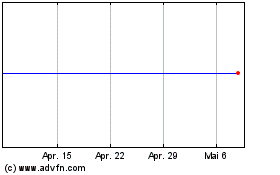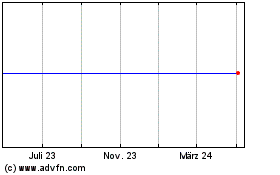FORM 6-K
SECURITIES
AND EXCHANGE COMMISSION
Washington,
D.C. 20549
Report
of Foreign Issuer
Pursuant
to Rule 13a-16 or 15d-16 of
the
Securities Exchange Act of 1934
For the
month of October 2022
Commission
File Number: 001-11960
AstraZeneca PLC
1
Francis Crick Avenue
Cambridge
Biomedical Campus
Cambridge
CB2 0AA
United
Kingdom
Indicate
by check mark whether the registrant files or will file annual
reports under cover of Form 20-F or Form 40-F.
Form
20-F X Form 40-F __
Indicate
by check mark if the registrant is submitting the Form 6-K in paper
as permitted by Regulation S-T Rule 101(b)(1):
Indicate
by check mark if the registrant is submitting the Form 6-K in paper
as permitted by Regulation S-T Rule 101(b)(7): ______
Indicate
by check mark whether the registrant by furnishing the information
contained in this Form is also thereby furnishing the information
to the Commission pursuant to Rule 12g3-2(b) under the Securities
Exchange Act of 1934.
Yes __
No X
If
“Yes” is marked, indicate below the file number
assigned to the Registrant in connection with Rule 12g3-2(b):
82-_____________
AstraZeneca PLC
INDEX
TO EXHIBITS
1.
Update on MESSINA Phase III trial
25 October 2022 07:00 BST
Update on the MESSINA Phase III trial
for Fasenra in eosinophilic
esophagitis
MESSINA did not meet one
of the two dual-primary endpoints, demonstrating a
statistically significant
improvement in histological
disease remission with Fasenra, but not in dysphagia symptoms,
compared to placebo
Eosinophilic esophagitis (EoE) is a rare, progressive, chronic
inflammatory disease of the esophagus currently believed to
be characterised by
the abnormal presence of eosinophils, a type of white blood cell,
in the inner lining of the esophagus.1-3 Patients
experience difficulty with swallowing (dysphagia), pain, food
getting stuck and anxiety.4,5
High-level results from the MESSINA Phase III trial showed that
AstraZeneca's Fasenra (benralizumab) did not meet one of the two
dual-primary endpoints. Fasenra demonstrated a statistically significant
improvement in histological disease remission, but not a change in
dysphagia symptoms, compared to placebo, in patients with EoE aged
12 years or older.
Mene Pangalos, Executive Vice President, BioPharmaceuticals
R&D, AstraZeneca said: "The results from the MESSINA Phase III
trial in eosinophilic esophagitis confirm
that Fasenra achieved
near complete depletion
of tissue eosinophils, consistent with its mechanism of
action, however
this did not translate into an improvement in dysphagia
symptoms. We will continue to analyse the complete data set to
share with the scientific community."
In the trial, histological disease remission was measured as the
proportion of patients with less than or equal to six eosinophils
per high power field at Week 24. Burden of dysphagia was assessed
using the patient-reported Dysphagia Symptom Questionnaire (DSQ)
and measured as a mean change from baseline at Week 24. The trial
included 210 patients, who received either Fasenra or placebo at four-week
intervals.
The safety and tolerability profile for Fasenra in the trial was consistent with the known
profile of the medicine.
Results from MESSINA will be presented at an upcoming medical
meeting.
Fasenra is
currently approved as an add-on maintenance treatment for severe
eosinophilic asthma in the US, EU, Japan and other
countries,6 and
is approved for self-administration in the US,6 EU7 and
other countries.
Notes
MESSINA
MESSINA is a randomised, placebo-controlled, double-blind,
parallel-group, multicentre, global Phase III trial designed to
investigate the efficacy and safety of Fasenra compared to placebo in patients aged 12 to
65 years of age with symptomatic and histologically active
EoE.8,9
The dual-primary endpoints analysed at Week 24 were the proportion
of patients with a histologic response, defined as a peak
esophageal eosinophil count less than or equal to 6 eosinophils per
high power field, and mean changes from baseline in Dysphagia
Symptom Questionnaire (DSQ).8 The
peak eosinophil count is obtained when a biopsy of the tissue of
the esophagus is examined under a microscope. The histologic
response endpoint used in the trial is consistent with histologic
remission.10 The
DSQ captures the presence and severity of dysphagia symptoms in the
past day in a 4-item patient-reported questionnaire and the score
is calculated over 14-day periods, ranging from 0 to 84, with a
lower score indicating less severe dysphagia.8
The trial period consists of a 24-week double-blind,
placebo-controlled treatment period followed by a 28-week
open-label treatment period.8 Eligible
patients were randomised in a 1:1 ratio to receive either 30 mg
of Fasenra or placebo at 4-week intervals for the
double-blind period. Patients who complete the double-blind period
on Fasenra continue into the open-label treatment
period with all patients receiving Fasenra 30 mg at 4-week intervals until Week 52,
with a further open-label extension offered to eligible patients
thereafter.9
In the trial, patients were allowed to remain on background
medications for EoE, including proton pump inhibitors, topical
corticosteroids, and EoE-driven diet elimination, provided that
they were stable prior to entry and during the first 52 weeks of
treatment, unless changes were clinically
indicated.8,9
Fasenra
Fasenra (benralizumab) is
a monoclonal antibody that binds directly to IL-5 receptor alpha on
eosinophils and attracts natural killer cells to induce rapid and
near-complete depletion of blood and tissue eosinophils in most
patients via apoptosis (programmed cell death).11
Fasenra is currently approved as an
add-on maintenance treatment for severe eosinophilic asthma in the
US, EU, Japan and other countries,6 and
is approved for self-administration in the US,6 EU7 and
other countries. Fasenra has
been studied in almost 4,000 patients in global clinical
trials.12-16
Fasenra is
in development for other eosinophilic diseases including bullous
pemphigoid, chronic obstructive pulmonary disease, chronic
rhinosinusitis with nasal polyps, chronic spontaneous urticaria,
eosinophilic esophagitis, eosinophilic gastritis/eosinophilic
gastroenteritis, eosinophilic granulomatosis with polyangiitis,
hypereosinophilic syndrome and non-cystic fibrosis
bronchiectasis.
Fasenra was
developed by AstraZeneca and is in-licensed from BioWa, Inc., a
wholly-owned subsidiary of Kyowa Kirin Co., Ltd.,
Japan.
AstraZeneca in Respiratory and Immunology
Respiratory & Immunology, part of BioPharmaceuticals, is one of
AstraZeneca's main disease areas and is a key growth driver for the
Company.
AstraZeneca is an established leader in respiratory care with a
50-year heritage. The Company aims to transform the treatment of
asthma and COPD by focusing on earlier biology-led treatment,
eliminating preventable asthma attacks, and removing COPD as a
top-three leading cause of death. The Company's early respiratory
research is focused on emerging science involving immune
mechanisms, lung damage and abnormal cell-repair processes in
disease and neuronal dysfunction.
With common pathways and underlying disease drivers across
respiratory and immunology, AstraZeneca is following the science
from chronic lung diseases to immunology-driven disease areas. The
Company's growing presence in immunology is focused on five mid- to
late-stage franchises with multi-disease potential, in areas
including rheumatology (including systemic lupus erythematosus),
dermatology, gastroenterology, and systemic eosinophilic-driven
diseases. AstraZeneca's ambition in Respiratory & Immunology is
to achieve disease modification and durable remission for millions
of patients worldwide.
AstraZeneca
AstraZeneca (LSE/STO/Nasdaq: AZN) is a global, science-led
biopharmaceutical company that focuses on the discovery,
development, and commercialisation of prescription medicines in
Oncology, Rare Diseases, and BioPharmaceuticals, including
Cardiovascular, Renal & Metabolism, and Respiratory &
Immunology. Based in Cambridge, UK, AstraZeneca operates in over
100 countries and its innovative medicines are used by millions of
patients worldwide. Please visit astrazeneca.com and
follow the Company on Twitter @AstraZeneca
Contacts
For details on how to contact the Investor Relations Team, please
click here.
For Media contacts, click here.
References
1. Muir A, et al. Eosinophilic
Esophagitis: A Review. JAMA. 2021;326:1310-1318.
2. Dellon ES, et al. Epidemiology and
Natural History of Eosinophilic
Esophagitis. Gastroenterology.
2018;154:319-332.e3.
3. Cheng E, et al. Tissue remodeling
in eosinophilic esophagitis. Am J Physiol Gastrointest
Liver Physiol. 2012;303:G1175-G1187.
4. Hirano I, et al. Clinical
Implications and Pathogenesis of Esophageal Remodeling in
Eosinophilic Esophagitis. Gastroenterol Clin North
Am. 2014;43:297-316.
5. Lucendo AJ, et al. Guidelines on
eosinophilic esophagitis: evidence-based statements and
recommendations for diagnosis and management in children and
adults. United European Gastroenterol
J.
2017;5:335-358.
6. AstraZeneca news
release. Available at: https://www.astrazeneca.com/media-centre/press-releases/2019/fasenra-approved-in-the-us-for-self-administration-in-a-new-pre-filled-auto-injector-the-fasenra-pen-04102019.html [Last
accessed: October 2022].
7. AstraZeneca news
release. Available at: https://www.astrazeneca.com/media-centre/press-releases/2019/fasenra-receives-positive-eu-chmp-opinion-for-self-administration-and-the-new-fasenra-pen-a-pre-filled-single-use-auto-injector-01072019.html [Last
accessed: October 2022].
8.
Clinicaltrials.gov. A Study of Benralizumab in Patients With
Eosinophilic Esophagitis (MESSINA). [Online] Available
at: https://www.clinicaltrials.gov/ct2/show/NCT04543409 [Last
accessed: October 2022].
9. AstraZeneca Data
on file. 2022 - REF-162311.
10. U.S. Department of
Health and Human Services, Food and Drug Administration, Center for
Drug Evaluation and Research (CDER). Eosinophilic Esophagitis:
Developing Drugs for Treatment. Guidance for Industry. 2020.
Available at: https://www.fda.gov/regulatory-information/search-fda-guidance-documents/eosinophilic-esophagitis-developing-drugs-treatment-guidance-industry [Last
accessed: October 2022].
11.
AstraZeneca. Fasenra Summary
of Product Characteristics. Available at: https://www.ema.europa.eu/en/documents/product-information/fasenra-epar-product-information_en.pdf [Last
accessed: October 2022].
12. Bleecker ER, et al. Efficacy and safety
of benralizumab for patients with severe asthma uncontrolled with
high-dosage inhaled corticosteroids and long-acting b 2-agonists
(SIROCCO): a randomised, multicentre, placebo-controlled phase 3
trial. Lancet. 2016;388:2115-2127.
13. FitzGerald JM, et al. Benralizumab, an
anti-interleukin-5 receptor a monoclonal antibody, as add-on
treatment for patients with severe, uncontrolled, eosinophilic
asthma (CALIMA): a randomised, double-blind, placebo-controlled
phase 3 trial. Lancet. 2016;388:2128-2141.
14. Nair P, et al. Oral
Glucocorticoid-Sparing Effect of Benralizumab in Severe
Asthma. N Engl J
Med. 2017;376:2448-2458.
15. Menzies-Gow A, et al. Oral
corticosteroid elimination via a personalised reduction algorithm
in adults with severe, eosinophilic asthma treated with
benralizumab (PONENTE): a multicentre, open-label, single-arm
study. Lancet Respir
Med.
2022;10:47-58.
16. Harrison TW, et al. Onset of effect and
impact on health-related quality of life, exacerbation rate, lung
function, and nasal polyposis symptoms for patients with severe
eosinophilic asthma treated with benralizumab (ANDHI): a
randomised, controlled, phase 3b trial. Lancet Respir
Med. 2021;9:260-274.
Adrian Kemp
Company Secretary
AstraZeneca PLC
SIGNATURES
Pursuant
to the requirements of the Securities Exchange Act of 1934, the
Registrant has duly caused this report to be signed on its behalf
by the undersigned, thereunto duly authorized.
Date:
25 October 2022
|
|
By: /s/
Adrian Kemp
|
|
|
Name:
Adrian Kemp
|
|
|
Title:
Company Secretary
|
AstraZeneca (NYSE:AZN)
Historical Stock Chart
Von Mär 2024 bis Apr 2024

AstraZeneca (NYSE:AZN)
Historical Stock Chart
Von Apr 2023 bis Apr 2024
